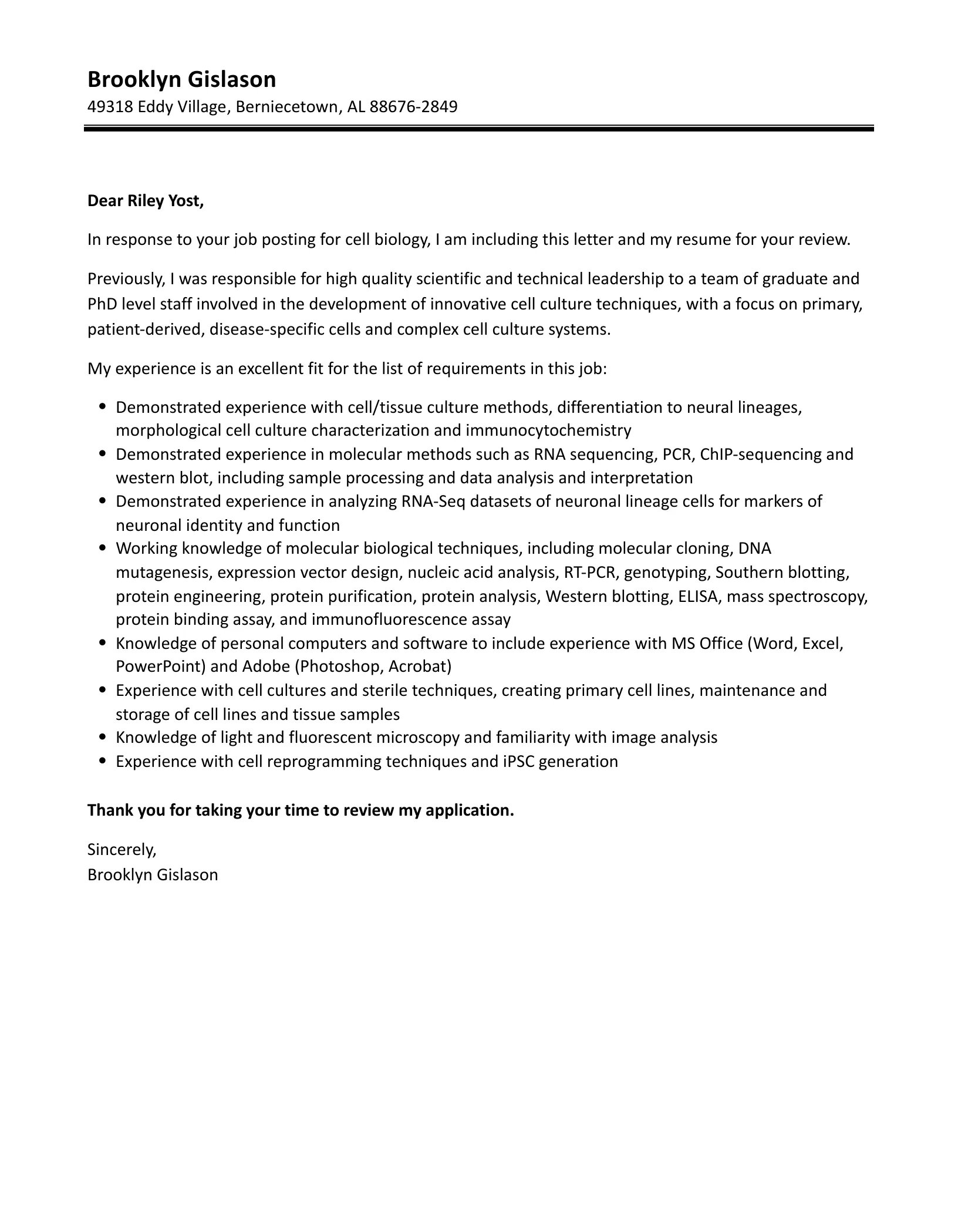Understanding the Biology Cover Letter
A biology cover letter is more than just a formality; it’s your first introduction to a potential employer. It’s a carefully crafted document designed to showcase your skills, experience, and enthusiasm for a specific biology-related position. Unlike a resume, which provides a summary of your qualifications, the cover letter allows you to tell a story, explaining why you are the perfect fit for the role and the company. It provides a platform to demonstrate your personality, writing abilities, and genuine interest in the opportunity. A well-written cover letter can significantly increase your chances of getting noticed and securing an interview, making it a crucial part of your job application process. This guide provides you with the knowledge to create a compelling and effective cover letter.
Why a Biology Cover Letter is Crucial
In the competitive field of biology, a cover letter is essential for several reasons. Firstly, it provides context to your resume. Your resume lists your skills and experiences, but the cover letter explains how those skills and experiences align with the specific requirements of the job. Secondly, it allows you to highlight achievements and quantify your contributions. While your resume might mention your research experience, your cover letter lets you elaborate on your findings, the impact of your work, and any awards or recognition you received. Thirdly, a cover letter is an opportunity to demonstrate your communication skills. Clear, concise, and professional writing is crucial in scientific fields, and your cover letter showcases your ability to communicate effectively. Furthermore, it provides a platform to express your passion for biology and your interest in the specific company or position. This personal touch can set you apart from other candidates and leave a lasting impression on the hiring manager.
Key Components of a Biology Cover Letter
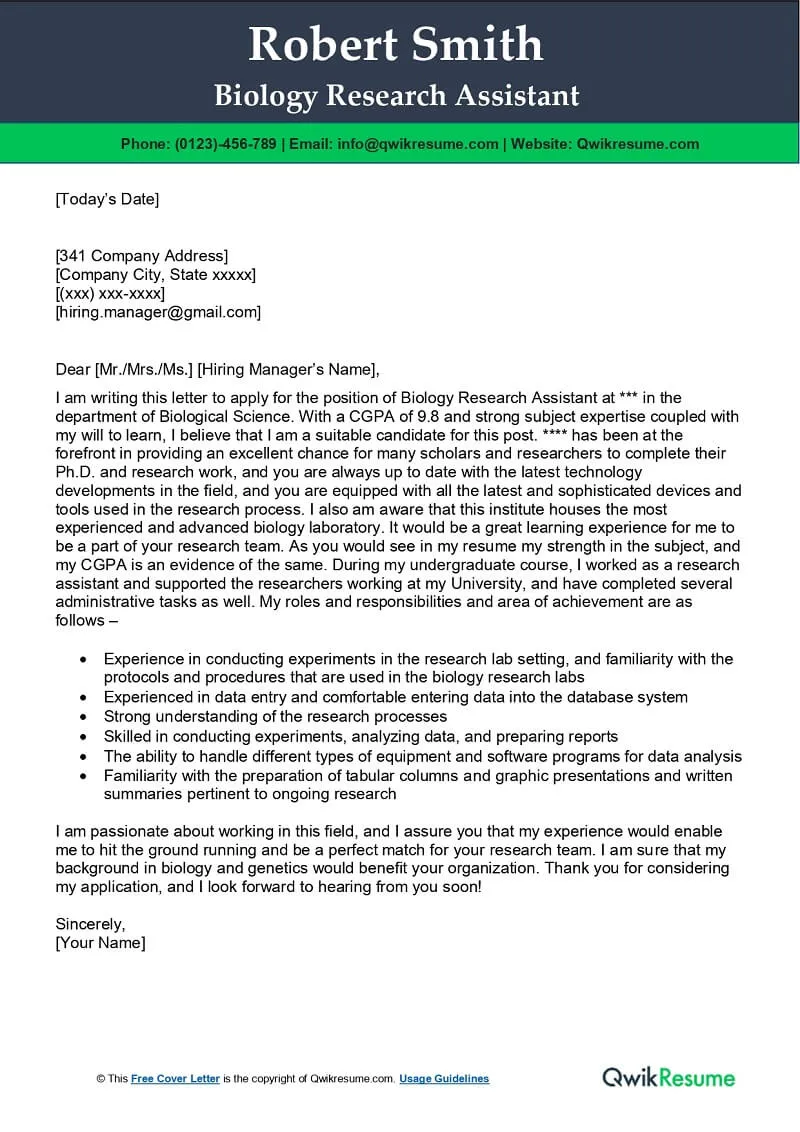
A successful biology cover letter has several key components that work together to create a compelling narrative. Understanding these elements and how they interact is crucial for crafting a winning application. These include the header, opening, body, and closing sections, each serving a specific purpose in communicating your value to the employer. Adhering to a standard format and structure ensures that your letter is easy to read and professional. The following sections will delve into each of these components, providing you with practical guidance on how to create an effective cover letter that highlights your skills, experience, and enthusiasm for the role.
Header Section
The header section of your cover letter is the first thing the reader will see, so it must be accurate and professional. This section includes your contact information and the date. The header should be formatted consistently and aligned to the left or right, depending on your preference, but maintain consistency throughout the document. This section ensures that the hiring manager knows how to contact you and provides a professional appearance that reflects your attention to detail.
Contact Information
Include your full name, address, phone number, and professional email address. Ensure your email address is professional (e.g., firstname.lastname@email.com) and not a casual or outdated one. Double-check all information for accuracy. This simple step prevents potential employers from having difficulty in reaching you, which could cost you an interview opportunity. Use a legible font and font size (e.g., Arial, 11-12pt) for optimal readability.
Date
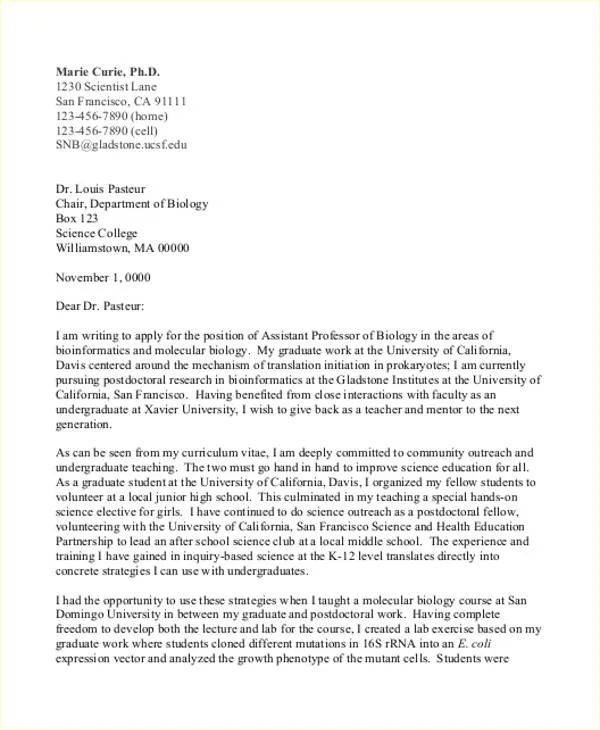
Include the date you are submitting the cover letter. This helps the employer keep track of when they received your application. Ensure the date format is consistent with the style used in the rest of the document (e.g., Month Day, Year).
Recipient’s Information
Below the date, include the name of the hiring manager (if known), their title, the department, and the company’s address. Addressing the letter to a specific person shows that you have researched the company and are genuinely interested in the position. If you can’t find the hiring manager’s name, use a professional greeting such as “Dear Hiring Manager”.
Opening Section
The opening section of your cover letter is your first chance to make a positive impression. It should immediately grab the reader’s attention and clearly state your purpose for writing. This section is crucial, as it sets the tone for the rest of the letter and encourages the reader to continue reading. A strong opening section piques the reader’s interest and makes them want to learn more about you and your qualifications.
Grabbing the Reader’s Attention
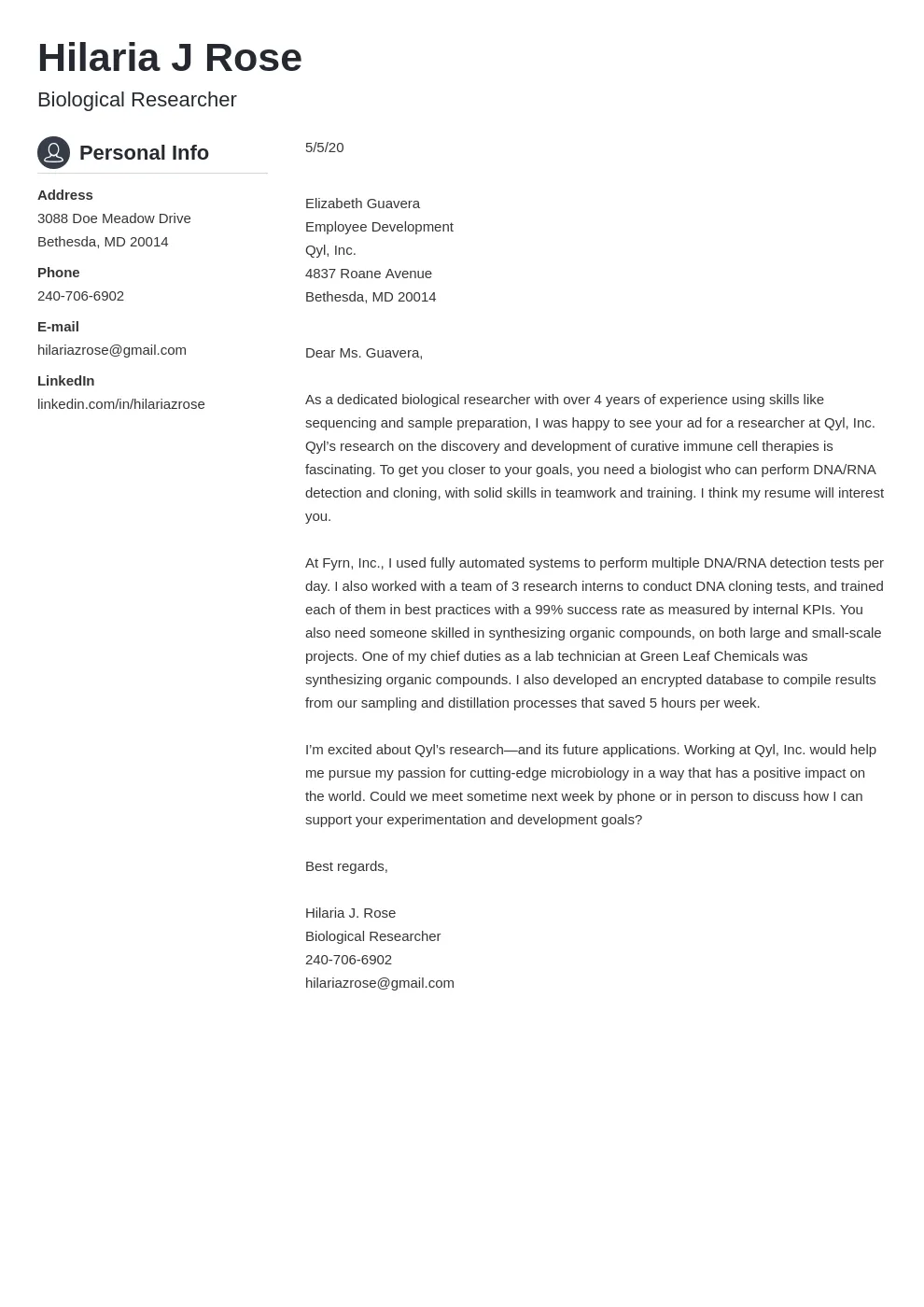
Start your cover letter with a strong opening statement that immediately captures the reader’s attention. Avoid generic phrases like “I am writing to express my interest…” Instead, try to highlight something specific that relates to the job or the company. You could mention a particular project you’re excited about, a recent achievement, or a shared interest. The goal is to show that you’ve done your research and are genuinely interested in the opportunity. This approach grabs their attention and encourages them to read the rest of the letter.
Stating Your Purpose
Clearly state the purpose of your letter, the specific position you are applying for, and how you found the job posting. Mentioning the job title and where you saw the advertisement (e.g., company website, LinkedIn, job board) helps the hiring manager quickly understand your application. This clarity ensures the reader knows what you are applying for and helps them quickly assess your suitability for the role. Keep your language concise and direct, avoiding any ambiguity.
Body Section
The body of your cover letter is where you demonstrate your qualifications and explain why you are a good fit for the role. This section should provide a detailed explanation of your skills, experience, and accomplishments, illustrating how they align with the job requirements. The body section should be well-structured, with clear paragraphs that focus on specific aspects of your qualifications. Your cover letter must make a strong case, using examples and evidence to show the value you would bring to the company. This section needs to be focused, highlighting the most relevant information and avoiding irrelevant details.
Highlighting Relevant Skills and Experience
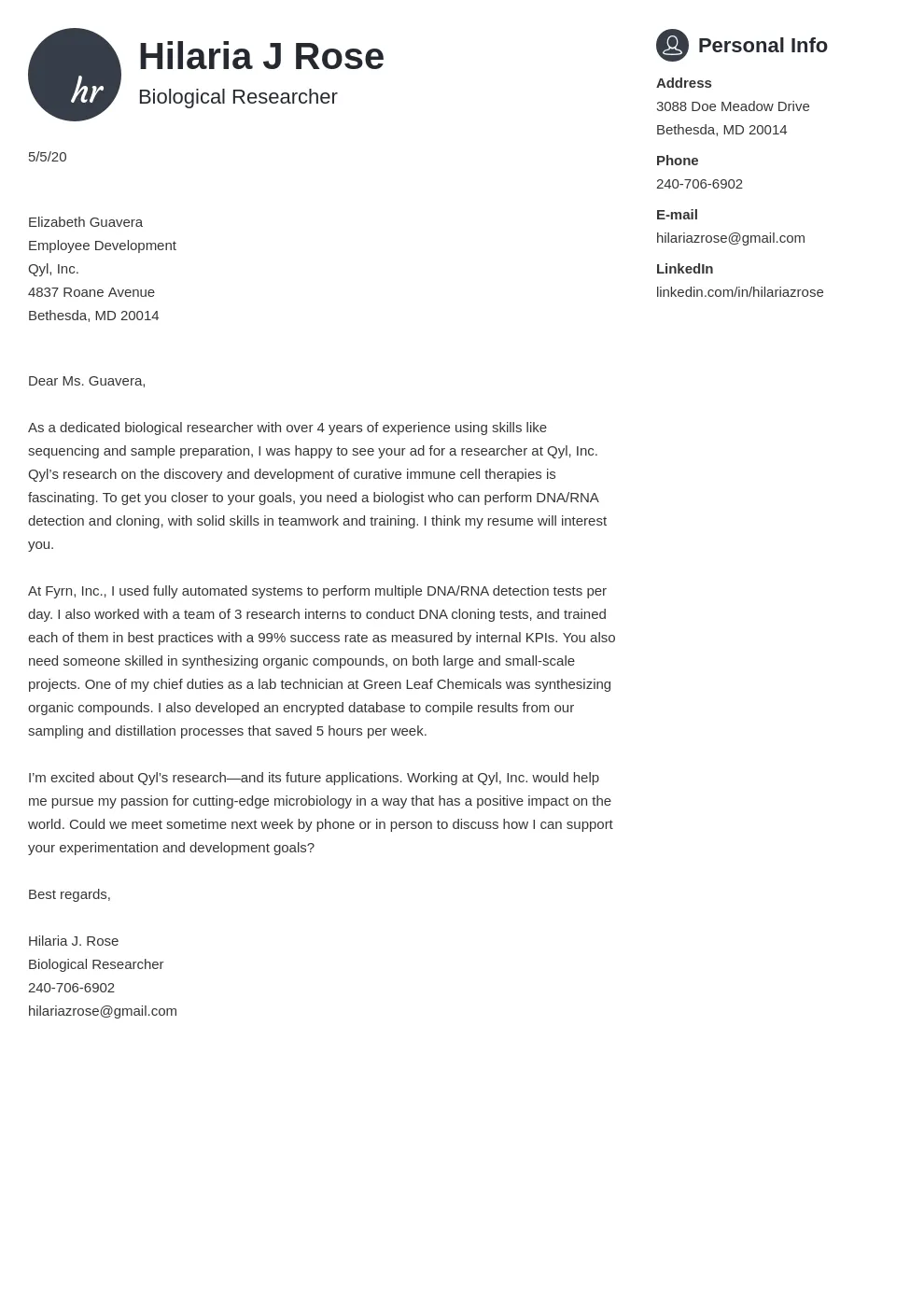
Carefully review the job description and identify the key skills and experiences the employer is seeking. In the body of your cover letter, highlight the skills and experience that directly match those requirements. Use specific examples from your past experiences to demonstrate how you’ve utilized those skills and achieved positive outcomes. If the job description emphasizes research skills, provide examples of research projects you’ve been involved in, including your role, methodologies used, and any significant findings. If the job requires laboratory experience, describe your proficiency in relevant techniques, such as PCR, microscopy, or cell culture. Tailoring this to the role is essential.
Showcasing Accomplishments
Don’t just list your responsibilities; showcase your achievements. Use the STAR method (Situation, Task, Action, Result) to describe your accomplishments. Start by briefly describing the situation, then explain the task you were assigned, the actions you took, and the positive results you achieved. This approach helps the hiring manager understand the impact of your work and demonstrates your ability to contribute to the company’s success. For example, instead of saying “Managed laboratory experiments,” state, “Managed complex experiments, resulting in a 15% increase in efficiency and a reduction in errors.” Your successes show what you can do.
Tailoring Your Letter to the Job
Avoid using a generic cover letter template. Customize each cover letter to the specific job and company you are applying for. Research the company’s mission, values, and recent projects to demonstrate your interest and understanding. Highlight how your skills and experiences align with the company’s goals and the specific requirements of the role. Showcasing this research demonstrates your enthusiasm for the position and helps make your application stand out. Tailoring the letter shows the employer that you have taken the time and effort to understand their needs and that you are genuinely interested in joining their team.
Quantifying Your Achievements
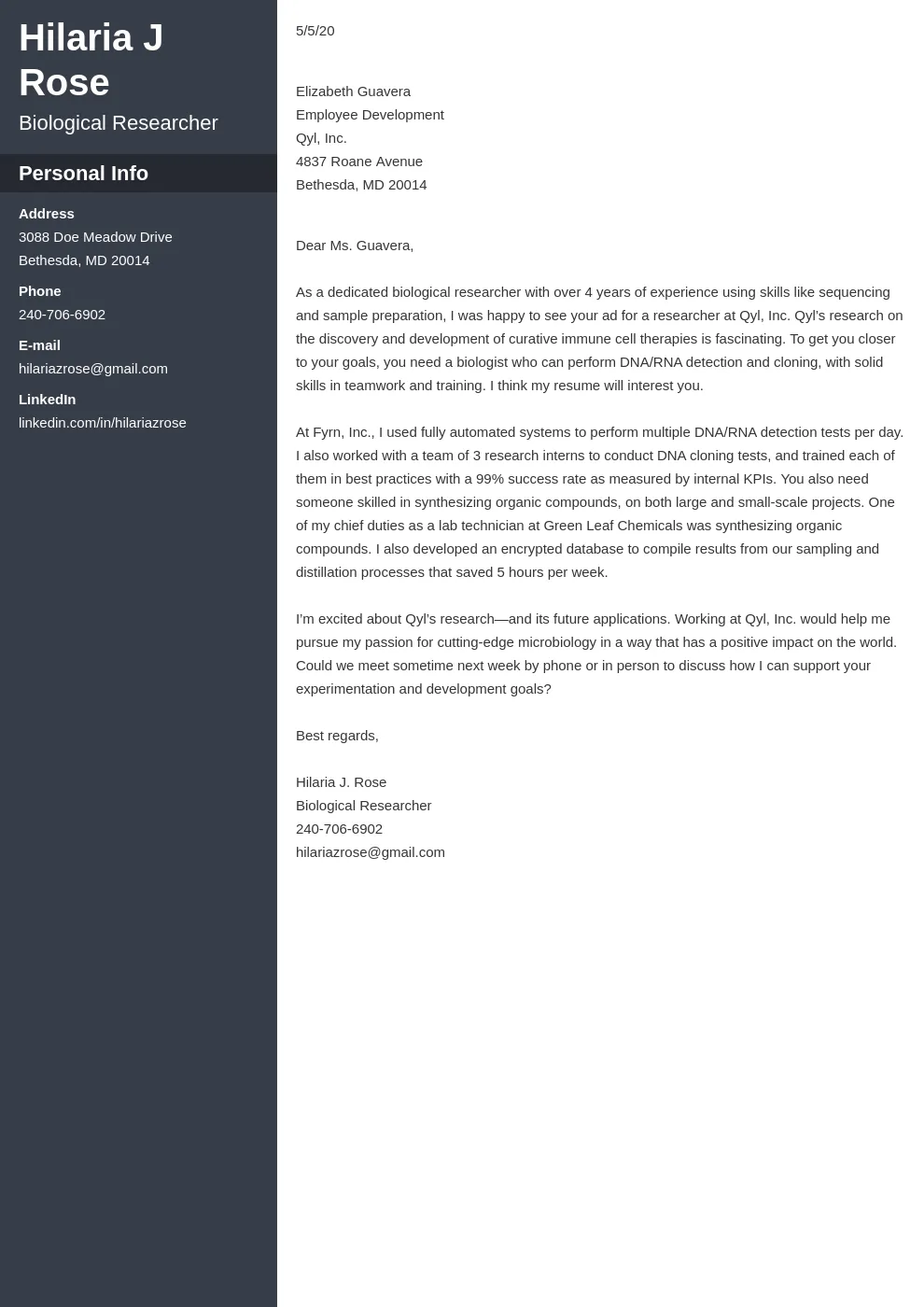
Whenever possible, quantify your achievements to demonstrate the impact of your work. Use numbers and data to support your claims and make your accomplishments more compelling. Instead of saying “Improved efficiency,” say “Improved laboratory efficiency by 20% through process optimization.” Instead of “Managed a research project,” state, “Successfully managed a $50,000 research grant, leading to the publication of three peer-reviewed articles.” This approach provides concrete evidence of your capabilities and shows the hiring manager the value you can bring. Numbers make your accomplishments more convincing.
Closing Section
The closing section of your cover letter should reiterate your interest in the position, express your enthusiasm, and include a call to action. It’s your last opportunity to leave a positive impression and encourage the hiring manager to contact you for an interview. A well-crafted closing section is crucial for sealing the deal and increasing your chances of getting a job offer. Make the close concise and memorable.
Expressing Enthusiasm
Reiterate your enthusiasm for the position and the company. Briefly restate why you are excited about the opportunity and how your skills and experiences align with the job requirements. Showing genuine interest helps build rapport with the hiring manager. Show the employer that you are genuinely interested in working for the company, and that you look forward to contributing to their team. A genuine expression of interest can set you apart from other candidates.
Call to Action
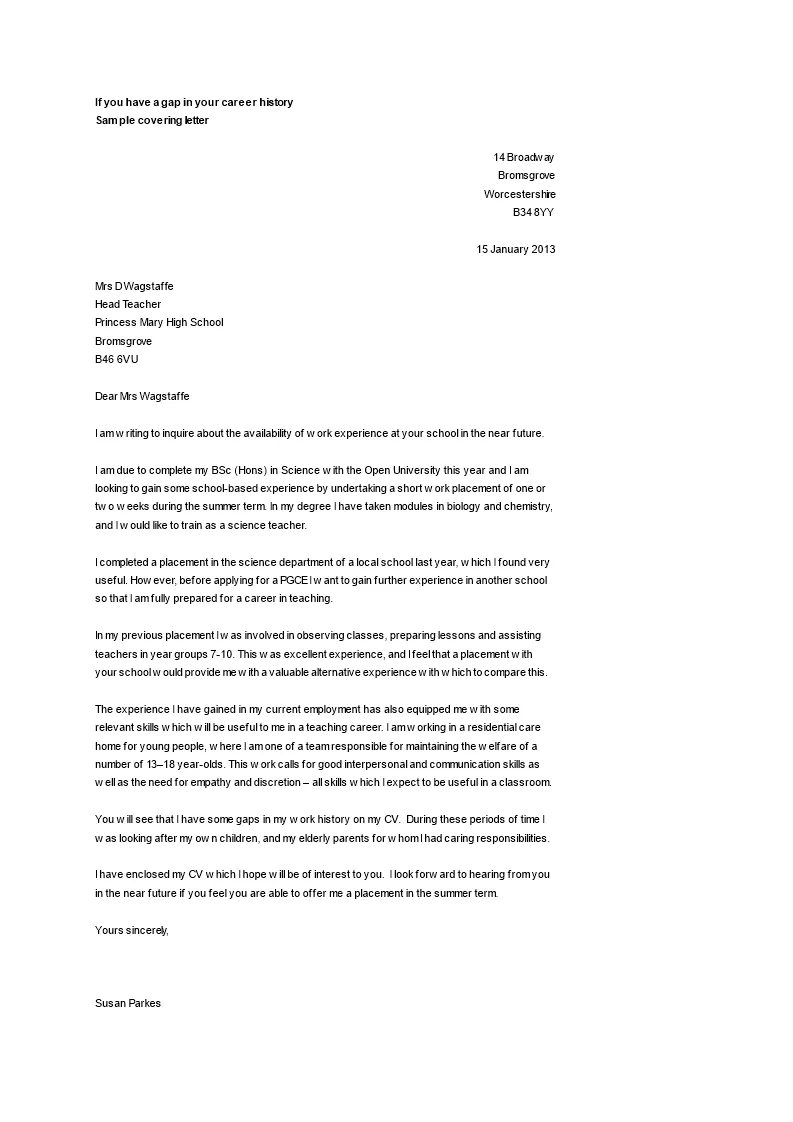
Include a clear call to action, such as requesting an interview. Thank the hiring manager for their time and consideration. Provide your contact information again, and make it easy for them to reach you. This is the final step. Make it easy for them to contact you and reiterate your interest in the position. Ensure a clear call to action directs the hiring manager on what to do next, making it easy for them to proceed.
Proofreading and Formatting
Before submitting your cover letter, carefully proofread it for any grammatical errors, spelling mistakes, or typos. A polished and error-free cover letter demonstrates your attention to detail and professionalism. Formatting is equally important. Ensure your cover letter is easy to read, with consistent font choices, margins, and spacing. A well-formatted cover letter shows that you value quality and presentation, and that you are willing to put in the time and effort to create a great application. Use a spell-checker and grammar checker, and then have someone else review your cover letter. Correct any errors to make a great impression.
Formatting Guidelines
Use a professional and readable font, such as Arial, Times New Roman, or Calibri. Ensure the font size is between 10 and 12 points for easy readability. Maintain consistent margins (typically one inch on all sides) and use single-spacing for paragraphs and double-spacing between paragraphs. Use a clear and concise style of writing, with short paragraphs and bullet points to make the information easily digestible. Ensure the formatting is consistent throughout the document to make it look professional. Using these formatting guidelines ensures your letter is easy to read, highlighting your professionalism.
Proofreading Checklist
Proofreading is a crucial step to ensure your cover letter is free from errors and presents you in a positive light. Use a checklist to ensure that you do not miss any errors. Check for spelling errors using a spell-checker, but also manually review the document, as spell-checkers may miss some errors. Check for grammatical errors by carefully reading through each sentence. Ensure that your sentences are grammatically correct and that there are no punctuation mistakes. Verify the accuracy of the information in the letter, including dates, names, and contact details. Have someone else review your cover letter. A fresh pair of eyes can often catch errors that you might miss. Doing this guarantees that your letter is polished and professional, providing a positive impression.
Biology Cover Letter Samples [Examples]
Reviewing samples of successful cover letters can help you get a better understanding of how to structure your own cover letter and what content to include. Look for templates that align with the specific type of role you are applying for, such as entry-level positions, research scientist roles, or laboratory technician positions. Customize the sample letters to reflect your unique skills, experience, and the requirements of the job you are applying for. By adapting the samples to your individual situation, you can create a cover letter that is both effective and personalized, increasing your chances of success. Remember, these examples are guides; tailor them to the specific role.
Entry-Level Biology Cover Letter
For entry-level positions, focus on your educational background, any relevant coursework, and any internships or volunteer experiences. Highlight any transferable skills, such as lab techniques, data analysis, or communication skills. Show enthusiasm for the field and a willingness to learn and contribute. In this case, showcase educational achievements and enthusiasm for the field, as experience may be limited. Show you are ready to take on responsibility and develop your career.
Research Scientist Cover Letter
For research scientist roles, emphasize your research experience, including your publications, presentations, and any significant findings. Highlight your specific research expertise, such as molecular biology, genetics, or bioinformatics. Mention any grants or awards you’ve received. For research roles, highlight your publications and specific expertise, and show how you are an expert. Demonstrate an ability to develop new research ideas and contribute to the team’s success. This is about your specific research and its impact.
Laboratory Technician Cover Letter
For laboratory technician roles, highlight your experience with lab techniques, equipment, and protocols. Emphasize your attention to detail, organizational skills, and ability to work collaboratively. Mention any certifications or training you have received. Highlight lab skills and collaboration ability. Show you are detail-oriented and organized, highlighting your lab skills. Show your experience with the equipment and protocols. This is about how you will fit in the lab.
